May 17, 2025 | 09:00 GMT +7
May 17, 2025 | 09:00 GMT +7
Hotline: 0913.378.918
May 17, 2025 | 09:00 GMT +7
Hotline: 0913.378.918

Shrimp samples tested positive for acute hepatopancreatic necrosis disease. Photo: Kim Anh.
As of early July 2024, Soc Trang province's brackish water shrimp farming area covered over 32,000 hectares. The affected shrimp farming area was recorded at nearly 1,200 hectares, with nearly 500 hectares impacted by shrimp diseases, primarily acute hepatopancreatic necrosis.
According to the Department of Animal Husbandry and Veterinary Medicine of Soc Trang province, acute hepatopancreatic necrosis disease spreads rapidly, with a high mortality rate reaching 90% within three to five days after detection. Consequently, specialized agencies are extensively disseminating disease prevention and treatment measures to each farming area. This effort aims to mitigate the impact on shrimp production efficiency in Soc Trang.
In Cu Lao Dung district, the brackish water shrimp farming area in 2024 decreased compared to the same period last year, reaching only nearly 2,400 hectares. Environmental impact and climate change make farmed shrimp more susceptible to disease. Meanwhile, the purchase price of commercial shrimp remains consistently low. These risks have deterred farmers from investing in the production season.
Mr. Dang Quoc Chi, Deputy Head of the Department of Agriculture and Rural Development of Cu Lao Dung district, stated that to enhance disease warning and prevention, the department has coordinated with the provincial livestock and veterinary departments to send staff to regularly monitor water sources at two fixed points in Cu Lao Dung district.
In the farming area of My Xuyen district, the district’s Department of Agriculture and Rural Development recommends that farmers release shrimp only after thoroughly surveying and renovating the pond, and carefully analyzing pH and salinity levels before releasing the shrimp.
To date, My Xuyen district has stocked 15,000 hectares of brackish water shrimp, achieving about 80% of the plan. Although the damaged area currently accounts for 4.5% of the total farming area, it remains within the safe threshold given the complex disease situation.
Recently, the district's Department of Agriculture and Rural Development collected 117 samples of damaged shrimp and sent them to the Department of Livestock and Veterinary Medicine of Soc Trang province for pathogen testing. The results showed that 17 samples were positive for acute hepatopancreatic necrosis disease.
To strengthen disease prevention measures for farmed shrimp, the district's agricultural sector has provided 3 tons of chlorine to farmers for treating damaged shrimp ponds, preventing the disease from spreading further.
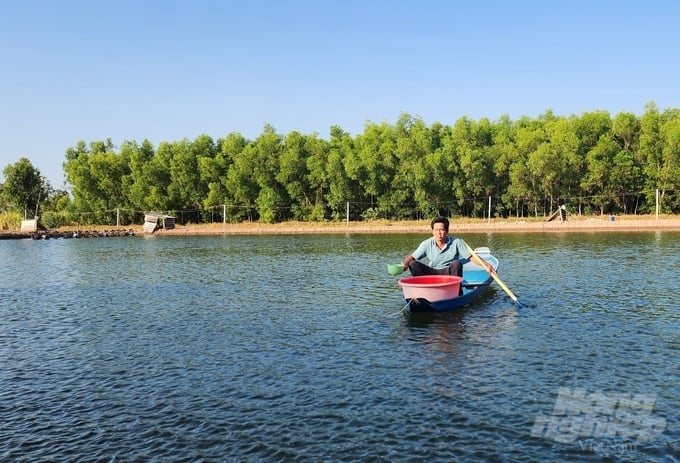
The progress of brackish water shrimp farming in 2024 in Cu Lao Dung district is slower than last year's. Photo: Van Vu.
So far, farmers' experience in preventing acute hepatopancreatic necrosis has improved significantly. At Hung Phu Aquatic Products Cooperative in An Thanh 3 Commune, Cu Lao Dung District, farmers have not only upgraded their processes innovatively but also adhere strictly to the principle of "raising water before raising shrimp."
They apply water circulation techniques to shrimp farming and prioritize the use of probiotics. Before releasing the shrimp into the pond, farmers raise them in a tarpaulin pond for about 30 days. Then, they transfer the shrimp to a net pond, where they have better resistance.
According to Mr. Tran Quang Can, Director of Hung Phu Aquatic Products Cooperative, this method helps farmers easily control the water environment, and manage and prevent acute hepatopancreatic necrosis disease in farmed shrimp.

Sensory testing combined with PCR testing to eliminate disease-carrying shrimp batches. Photo: Kim Anh.
In the first six months of 2024, the Department of Animal Husbandry and Veterinary Medicine of Soc Trang province collected 227 samples for disease surveillance in damaged ponds. The results showed that 53 samples were positive for acute hepatopancreatic necrosis syndrome (AHPND).
Experts note that acute hepatopancreatic necrosis disease has been circulating in farming areas for many years, becoming one of the leading causes of damage to the province's brackish water shrimp farming area.
Mr. Tran Tuan Phong, Head of the Animal Husbandry and Veterinary Department in Soc Trang province, recommends that farmers thoroughly clean out all the black mud from the previous crop during the pond renovation process. Additionally, all crustaceans (crabs and shrimp, for example) that can carry pathogens must be destroyed.
Building a separate water supply and drainage system with settling ponds and water treatment ponds is also essential. Before and after use, water sources must be treated to destroy pathogens using chemicals permitted by the Ministry of Agriculture and Rural Development. Water supplied to the pond must be filtered through a thick mesh to avoid eggs and larvae of disease-carrying crustaceans.
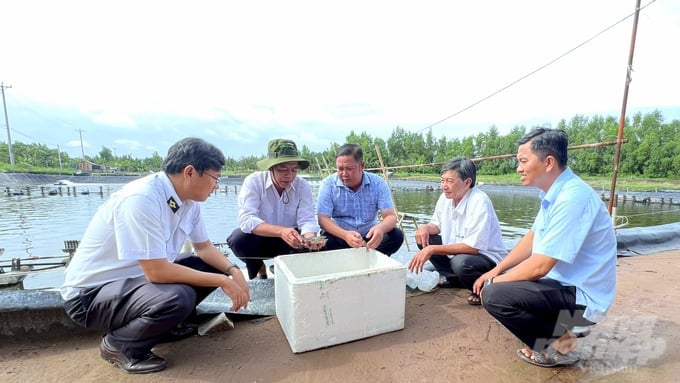
The Department of Animal Husbandry and Veterinary Medicine of Soc Trang province inspects and guides shrimp farmers on solutions to prevent acute hepatopancreatic necrosis disease. Photo: Van Vu.
If shrimp are detected positive for acute hepatopancreatic necrosis disease, farmers should adhere to the "3 Don’ts": Don’t hide the discharge, Don’t discharge untreated wastewater, and Don’t discharge dead or diseased shrimp into the environment.
In the coming weeks, the brackish water shrimp farming area in Soc Trang is likely to increase sharply, aiming to supply raw shrimp for processing and export promptly. To achieve the desired farming efficiency, professional agencies recommend that farmers prepare thoroughly in all aspects before starting the new farming season.
Translated by Quynh Chi
![Multi-channel, multi-directional Vietnamese agricultural markets: [7] Deep processing makes global reach easy](https://t.ex-cdn.com/nongnghiepmoitruong.vn/608w/files/huytd/2025/05/16/2946-che-bien-sau-chia-khoa-vang-nang-tam-nong-san-viet-tren-ban-do-the-gioi-080603_110-093858.jpg)
(VAN) The application of deep processing technology is helping Vietnamese agricultural products enhance their value, create competitive advantages, and open doors to conquer global consumers.
![Multi-channel, multi-directional Vietnamese agricultural markets: [6] Agri products go online](https://t.ex-cdn.com/nongnghiepmoitruong.vn/608w/files/content/2024/12/10/1-113313_954.jpg)
(VAN) Bringing agri products onto e-commerce platforms is an effective way to build a brand that many businesses, cooperatives, and agricultural production households are doing.
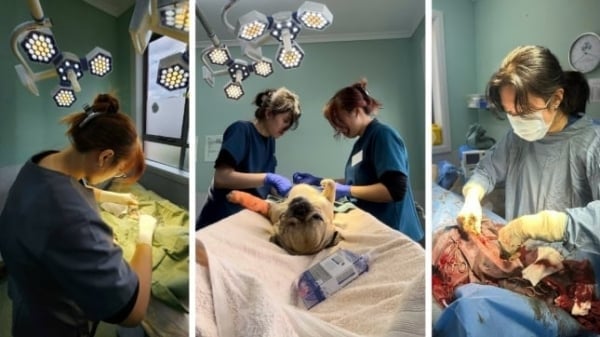
(VAN) Veterinary training should focus on quality, not just quantity. Veterinarians also need more options to pursue specialized training.
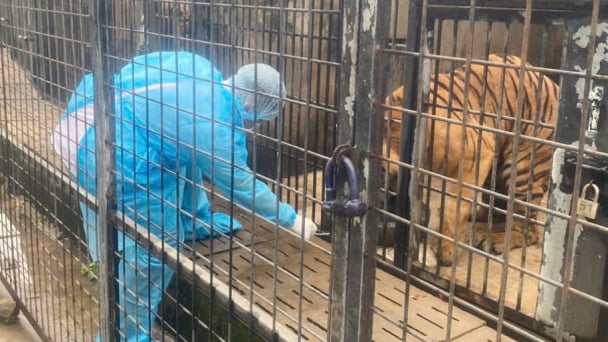
(VAN) The veterinary industry needs to be viewed objectively and further invested in to properly demonstrate its role and importance in the new context.

(VAN) The number of veterinarians graduating each year is not enough to meet actual needs, hence a difficult problem for the growing livestock industry.
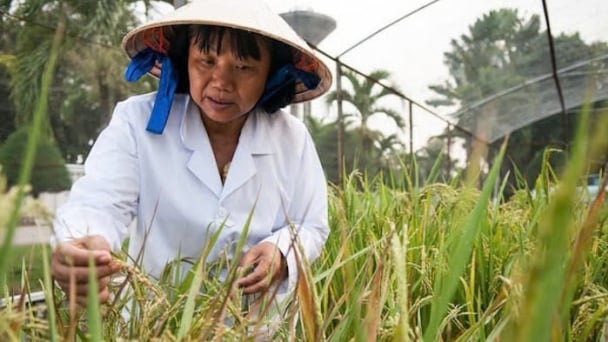
(VAN) The strategic partnership between Cambodia, the Philippines, Vietnam, and CGIAR ensures that innovative solutions effectively address national priorities for food system development.
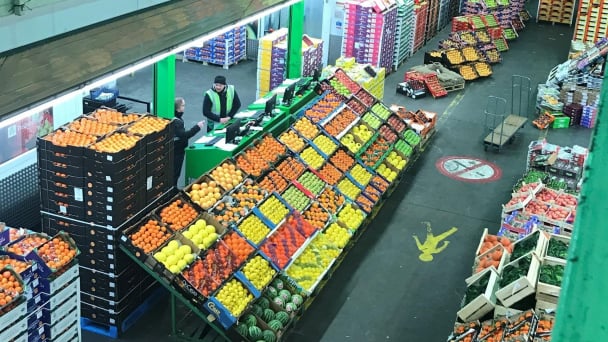
(VAN) This was affirmed by the UK Minister of State at the Department for Environment, Food and Rural Affairs during a working session with Deputy Minister Tran Thanh Nam on May 13.